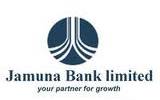Introduction
The digital banking has got greater attention in the recent banking arena. The digital banking service received immense adaptation to the clients. In Bangladesh however, though lately but has started such kind of digital banking. In this report I will make case study depending on HSBC. Very few particularly two banks HSBC and Citi NA are providing digital banking service for exclusive clients in Bangladesh. The HSBC Asia Pacific group represents HSBC in Bangladesh. HSBC opened its first branch in Dhaka in 17th December 1996 to provide personal banking services, trade and corporate services, and custody services. The Bank was awarded ISO9002 accreditation for its personal and business banking services, which cover trade services, securities and safe custody, corporate banking, Hexagon and all personal banking. This ISO9002 designation is the first of its kind for a bank in Bangladesh. The Hong Kong and Shanghai Banking Corporation Bangladesh Ltd. Primarily limited its operations to help garments industry and to commercial banking. Latter, it is extended to pharmaceuticals, jute, and consumer products. Other services include cash management, treasury, securities, and custodial service. Realizing the huge potential and growth in personal banking industry in Bangladesh, HSBC extended its operation to the personal banking sector in Bangladesh and within a very short span of time it was able to build up a huge client base. Extending its operation further, HSBC opened a branch at Chittagong, three branch offices at Dhaka (Gulshan, Mothijheel and Dhanmondi) and an offshore banking unit on November 1998.
Becoming Digitalized Banking of HSBC
The digital banking adaptation has gained special attention in academic studies during the past five years as, for instance, banking journals have devoted special issues on the topic. In the past, the conventional focus of digital banking research has been on technological development, but this is now shifting to user-focused research. In the recent study, Wang, Wang, Lin, and Tang (2003) have investigated the relationship between perceived usefulness, perceived ease of use, and perceived credibility with customer adaptation to digital banking in the context of digital banking sector in Taiwan. Moreover, the study of Wang et al. (2003) suggested that overall customer attitude, risky, and screen design of the system could be taking into account to investigate further research. In the current study, therefore, the researcher will utilize the study of Wang et al. (2003) with an added variable customer attitude to investigate such relationship. In another study conducted by Pikkarainen, Pikkarainen, Karjaluoto, and Pahnila (2004) pointed out that the overall customer attitude needed to be considered to investigate such relationship. There is strong evidence that the customer attitude is positively related to customer adaptation. Few other empirical studies suggested that the integrating role is due to perceived credibility and customer attitude being the outcome of internal organizational policies and practice that leads to customer value, satisfaction, and more digital banking service usages.
Hence, in this report, the researcher will utilize customer attitude as an added variable to the study of Wang et al. (2003) to investigate such relationship in context of digital banking service providers in Bangladesh. That is reason of becoming digitalized, therefore, is stated as follows: the present study will investigate the relationship between perceived usefulness, perceived ease of use, perceived credibility, customer attitude, and customer adaptation to digital banking in the context of HSBC in Bangladesh.
Relationship between customer attitude and customer adaptation of digital banking:
Previous studies have used attitudinal variables to determine the adaptation or non-adaptation of digital banking. ATM suggests that a prospective user’s overall feelings or attitudes toward using a given technology-based system represent major determinants as to whether or not he/she will ultimately use the system (Davis, 1993). TRA and TPB also assume that individual adopting is motivated by behavioral attitudes (Davis et al., 1989; Liao, Shao, Wang, & Chen, 1999; Tan & Teo, 2000).
Understanding the determinants of consumers’ attitude, it is argued that this attitude has a strong, direct, and positive effect on consumers’ intentions to actually use the new technology or system (Bobbitt & Dabholkar, 2001). Similarly, Lee and Turban (2001) concurs that there is a strong relationship between attitude and consumers’ intention to adopt digital banking and added that the situational factor time pressure has an attenuating impact on the relationship. Wolfinbarger and Gilly (2003) also support this relationship and added two more situational factors; these are need for special items and attractiveness of alternatives. In general, the level of trust, interpersonal as well as institutional, is positively related to consumers’ attitude, which is also related to intention to bank on the Internet However, factors affecting the adaptation of a new information technology are likely to vary with the technology, target user’s attitude, and context. In the same year, Aladwani (2001) highlighted consumer attitudes as one of the main future challenges in the adaptation of digital banking by Bangladeshi banks. The consumer research also confers empirical evidence about how consumer behaviour, attitude, motivation affect consumer adaptation of digital banking. Among the variables found to affect whether or not consumers engaged in digital banking adaptation, customer attitudes toward digital banking is one of them. As whispered by Akinci et al. (2004), the adaptation of digital banking is more determined by customer attitude than by seller offerings. In the same way, personal attitudes have been found to affect customer adaptation of digital technologies (Kolodinsky, Hogarth, & Hilgert, 2004) while consumer traits, Monsuwe´, Dellaert, and Ruyter, (2004) suggest, affect attitudes toward digital banking and their intention to bank online.
HSBC understand that different roles in organization have different needs, so they enable each user to personalize their Electronic page to show content that is relevant to them. For example client’s treasurer may wish to see content ranging from cash management to research, through to securities, whereas one of their payment initiators may just need to focus purely on cash management. A user is set up with a personal page and accesses a range of content known as ‘tools’ based on relevant levels of entitlement. These tools provide information in summary initially and can be expanded to provide further detail, for example, to drill deeper into an account balance or to open a piece of research.
Digitalized Services
Cash management @ HSBC
HSBC strive to help client’s organization to make the best use of financial assets through effective cash management. Cash management @ HSBC solutions available through the personal page are:
Global balance and transaction reporting that empowers users to:
- View balance summaries with sub-totals and projections
- Drill into balance details including account selection details
- Investigate statements
- Work with real time data
- Choose between several local languages
- Access accounts around the world
- Report third party (non HSBC Group) banks via SWIFT
- Download reports and files
Additional functionality includes the ability to:
- Make domestic and international high value payments and low value payments
- Make inter-account transfers
- Create payment templates
- Upload files for direct transmission of data
- Scope to inform beneficiaries that payment instructions have been sent.
Markets @ HSBC
There is also access to:
- Valuable HSBC research from the world-view to local markets, covering daily, weekly and monthly publications, as well as specific reports.
- Snapshots of forthcoming events and breaking news through the calendar tool.
- Market commentary and other thought-leading content.
- And where appropriate, access to FX trading platform, which provides secure online access with all the power of the HSBC dealing room.
Securities services @ HSBC
For HSBC’s institutional custody clients, they have begun roll out in Asia of the following:
HSBC’s securities solutions available through personal page give users the opportunity to:
- View portfolio details
- Drill into holdings details including where stock is held and its delivery availability
- Further drill into the transactions that cause the stock movements
- Search transactions with great flexibility
- Enquire on aged transactions by matched, unmatched, and failed status
- Search for Information for securities and broker/counter-party information
- Download files
They are adding new features including file upload, bulk file download, cash projections, and corporate event enquiries.
The benefits of using HSBCnet
More Control
- Of users accounts, including access to real-time information
- Over whom in user organisation can access what information and the actions they can take online
- To improve workflows and drive approvals move swiftly through user organization
Personalization
- By each user of their personal page, thereby ensuring that only authorized person see content that is relevant
Breadth
- Of accounts and client’s relationship with HSBC
- Access to content and ideas from across HSBC’s Corporate, Investment Banking, and
Markets business through one integrated personal page
- Client will be using the same Electronic platform as user’s colleagues in other countries, thereby adding to the consistency of work tools he use
Depth
- By understanding account balances and other information at a summary level and then
- drilling deeper
- Through having access to the wealth of HSBC research with a few simple clicks
Freedom
Users can use the personal page whenever it suits them and from wherever they can access the Electronic, within security parameters
Security
HSBC recognize and share the need for robust security. Therefore, HSBC have a range of security features that strengthen depending on the user’s use of their personal page. In addition to providing SSL 128-bit encryption, HSBC enforce the use of user name and password for information access and smart card security for appropriate transactional services.
Conclusions
Today’s service industry is getting more competitive, the digital banking service is no exception. In the context of banking service-oriented organization perceived credibility and perceived ease of use have great importance in the digital banking service organization to ensure more customer adaptation. Therefore, from this study HSBC can obtain the indications on which of the issues they have to put more emphasis on to hold the greater customer adaptation in terms of market share, to raise it and to enhance more usages of digital banking. However, similar kind of stress should put on the perceived usefulness and customer attitude related factors. Finally, this research will encourage further study and useful guidelines for these types of researches.
References
Aladwani, A. M. (2001). Online banking: a field study of drivers, development challengers, and expectations. International Journal of Bank Marketing, 21(3), 213-225.
Akinci, S., Aksoy, S., & Atilgan, E. (2004). Adoption of internet banking among sophisticated consumer segments in an advanced developing country. International Journal of Bank Marketing, 22(3), 212-232.
Wong, X., Yen, D. C., & Fang, X. (2004). E-commerce development in China and its implications for business. Asia Pacific Journal of Marketing and Logistics, 16(3), 68-83.
Wang, Y., Wang, Y., Lin, H., & Tang, T. (2003). Determinants of user acceptance of internet banking: an empirical study. International Journal of Service Industry Management, 14(5), 501-519.
Tan, M., & Teo, T. S. H. (2000). Factors influencing the adoption of internet banking. Journal of the Association for Information Systems, 1(5), 22-38.
Pikkarainen, T., Pikkarainen, K., Karjaluoto, H., & Pahnila, S. (2004). Consumer acceptance of online banking: an extension of the technology acceptance model. Internet Research: Electronic Networking Applications and Policy, 14(3), 224-235.
Liao, Z., & Cheung, M. T. (2002). Internet-based e-banking and consumer attitudes: an
empirical study. Information and Management, 39(4), 283-295.
Davis, F. D., Bagozzi, R. P., & Warshaw, P. R. (1992). Extrinsic and intrinsic motivation to use computers in the workplace. Journal of Applied Social Psychology, 22(14), 1109- 1130.
Bobbitt, L. M., & Dabholkar, P. A. (2001). Integrating attitudinal theories to understand and predict use of technology-based self-service: the internet as an illustration. International Journal of Service Industry Management, 12(5), 423-450.
Lee, M. K. O., & Turban, E. (2001). A trust model for consumer internet shopping. International Journal of Electronic Commerce, 6(1), 75-91.
Kolodinsky, J. M., Hogarth, J. M., & Hilgert, M. A. (2004). The adoption of electronic banking technologies by US consumers. International Journal of Bank Marketing, 22(4), 238-259.
Monsuwe´, T. P. Y., Dellaert, B. G. C., & de Ruyter, K. (2004). What drives consumers to shop online? International Journal of Service Industry Management, 15(1), 102-121.
















